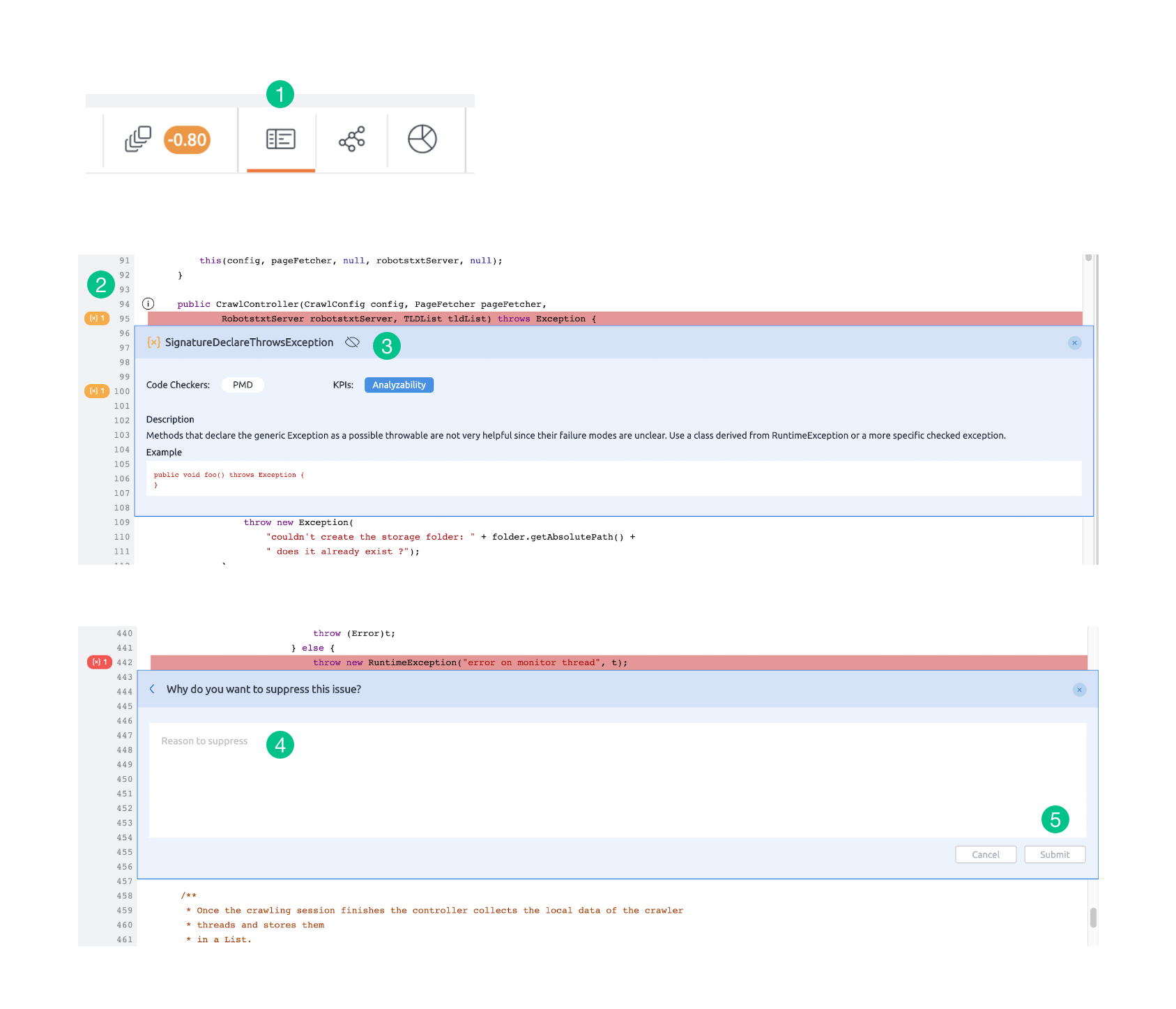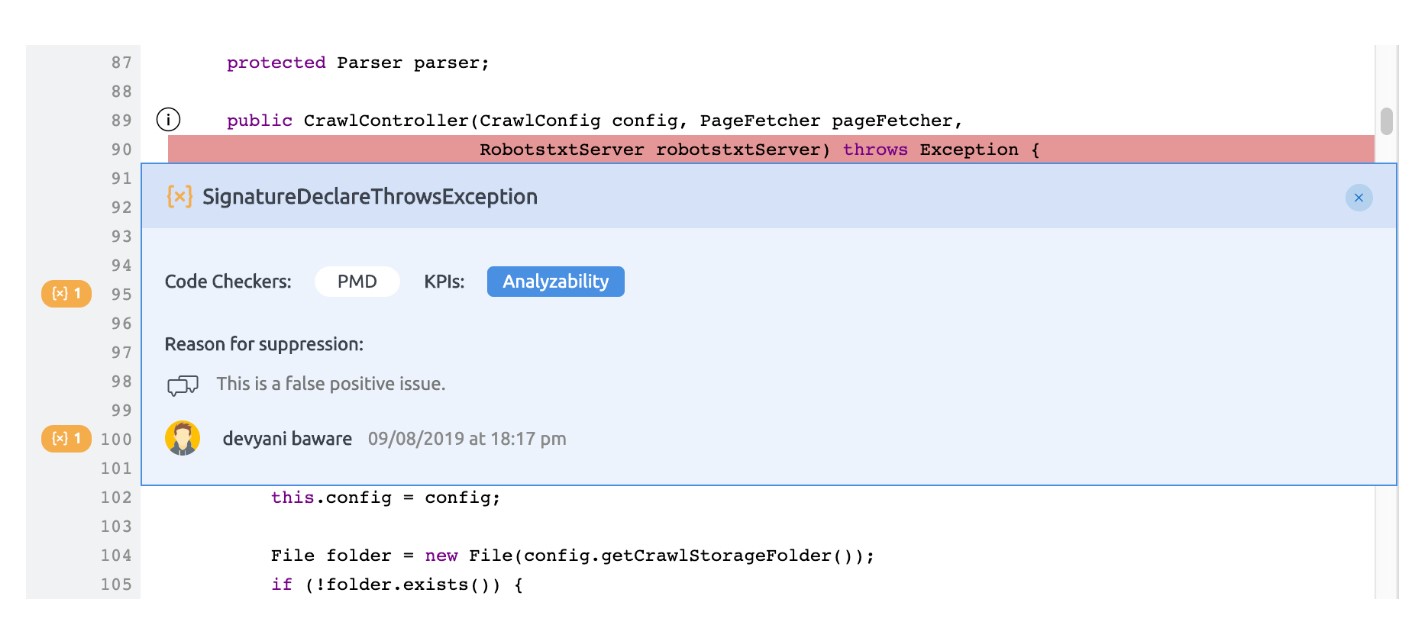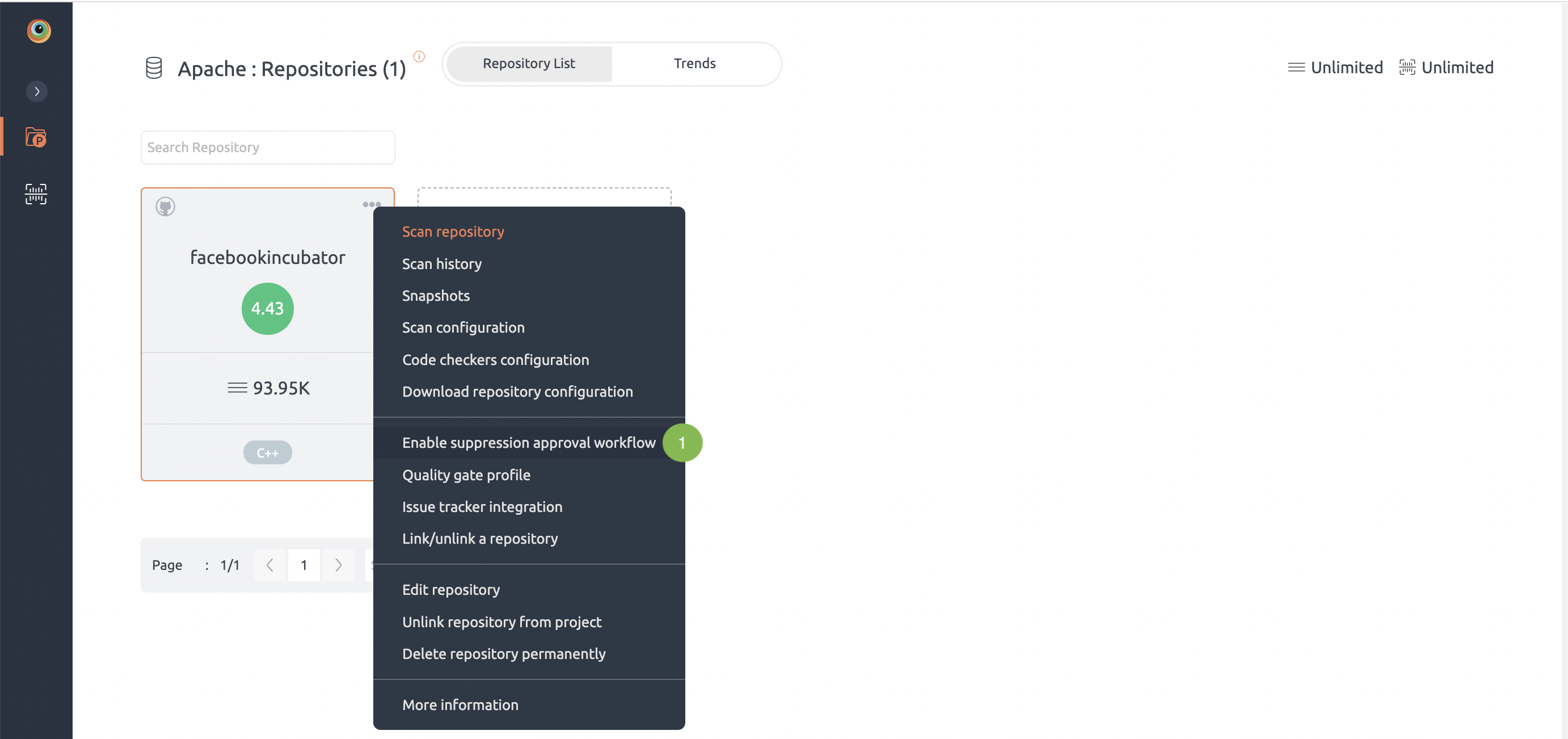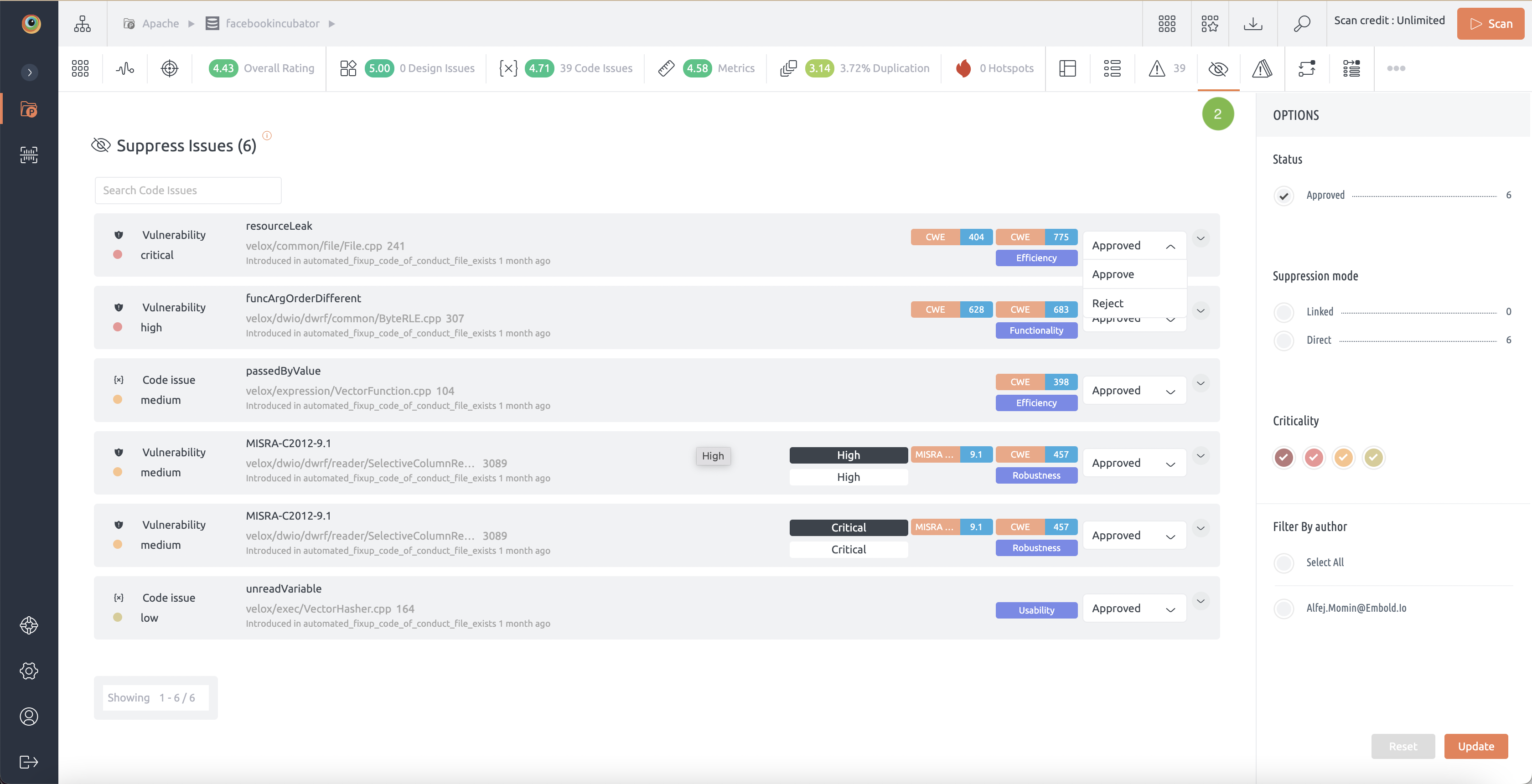Issue Suppression
Code issues are one of the important assets of BrowserStack Code Quality analysis. Issue suppression is a feature that lists the suppressed code issues within a file/project. Suppression means basically ignoring some parts or a whole parts of the code.
In a few cases, code analysis gives false-positive. Issue suppression is a feature that allows users to suppress these false-positive issue occurrences. This is important because disabling the issue type entirely will not be correct in many cases. If one issue is suppressed, it will be taken off from the code issues panel and will be moved to separate suppressed issues panel.
Steps for suppressing an issue:
1. Go to the Component Explorer present at the top navigation bar next to the duplication tab.
2. Click on the icon on the left side for the issue to be suppressed.
3. Click on “Suppress this occurrence” icon.
4. Add comment i.e. the reason for suppression.
5. Click on the Submit button.

Steps for unsuppressing an issue :
- Go to the Component Explorer present at the top navigation bar next to the duplication tab.
- From the Suppressed Issues tab, click on the unsuppress icon.

Suppression details can be seen on click of suppressed issue .

Suppression Review Workflow
This feature is only available for enterprise customers.
- Select three dots on repository’s page and click on enable suppression approval work flow.

2. When a developer suppresses an issue, project manager, project admins and super admins will see the list of suppressed issues on newly introduced Suppression Status page.

3. Project manager, project admins and super admins can review – Accept or Reject suppressions.
Suppression history
The suppression history feature allows users to view a comprehensive log of suppression actions taken on certain issues. This log includes details such as the name of the user who initiated the action, the reason for the suppression, the status of the suppression (whether it was pending, approved or rejected), any accompanying reasons for approval or rejection, and the date on which the action occurred. This feature provides transparency and accountability regarding the management of suppression issues within the system.
See screenshot below for reference

